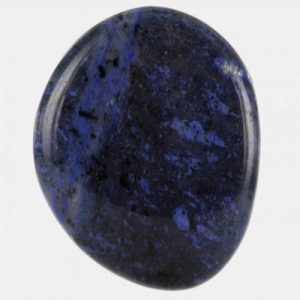Dumortierite
Dumortierite is a fairly common mineral in massive, fibrous and granular form but extremely rare as crystals. The massive material is a beautiful and very hard material suitable for cabochons and uses in jewelry. Faceted gems are extremely rare and usually small and included. The only current source of facetable crystals is Mina Gerais, Brazil.
Dumortierite is AN aluminium salt with a hardness which will vary from 7.0 to 8.5 on the scale. In combination type, in the main once cut, its hardness is 7.0. (the same as quartz), whereas crystal forms have a hardness rating of 8.5. The mineral was initial represented in 1881 and was named when French fossilist, Eugene Dumortier (1803-1873). Dumortierite conjointly encompasses a few industrial functions but jewellery. Since it’s famed to show remarkably pure white in color once dismissed, it’s typically used for the assembly of ceramic ware and ceramics. Dumortierite isn’t noted to be treated or unnaturally increased in any method.
| Crystallography: | Orthorhombic – Dipyramidal |
| Crystal Habit: | As fibrous or columnar crystals, having generally poor face development, to 6 cm; as coarsely crystalline to intimate parallel aggregates of needles; massive. Twinning: Common on [110], which may produce trillings. |
| Cleavage: | [100] Distinct, [110] Indistinct |
| Fracture: | Fibrous |
| Tenacity: | Brittle |
| Moh’s Hardness: | 7.0 – 8.5 |
| Density: | 3.21 – 3.41 (g/cm3) |
| Radioactivity: | Not Radioactive |
| Color: | Pale to dark Blue, Greenish Blue, Greenish, Brown, Violet, Pink |
| Transparency: | Transparent to Translucent |
| Luster: | Vitreous to Dull |
| Refractive Index: | 1.668 – 1.688 Biaxial ( – ) |
| Birefringence: | 0.150 – 0.370 |
| Dispersion: | Strong |
| Pleochroism: | Strong; X = deep blue or violet; Y = yellow to red-violet or nearly colorless; Z = colorless or very pale blue. |


